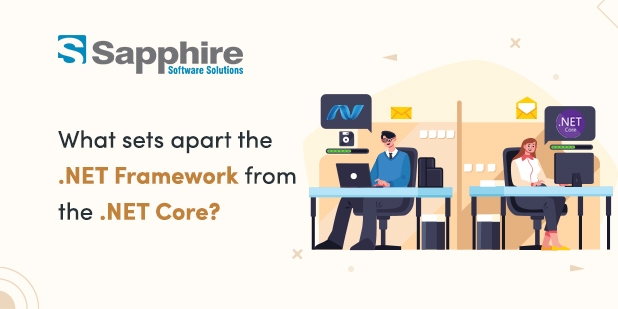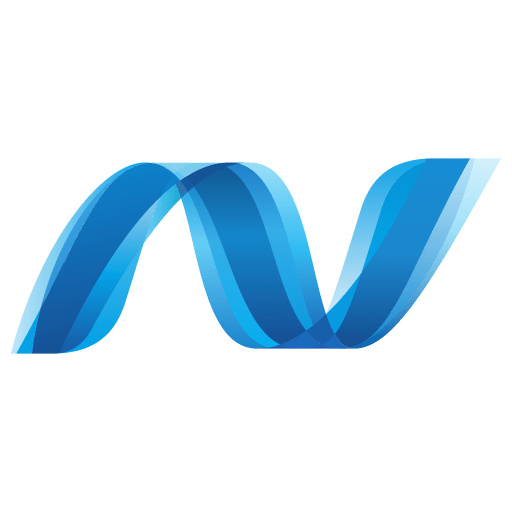Microsoft has developed two software development frameworks, DOT NET Framework and DOT NET Core, used to design and execute applications. Even though they are pretty similar, many things separate them. In this piece, we’ll examine these variations and discover their origins.
Introduction to DOT NET Framework and DOT NET Core:
Microsoft first made available the DOT NET Framework in 2002. It gave developers a reliable platform to build Windows programs, web services, and other kinds of software. The DOT NET Framework’s vast class library and runtime environment helped it become extensively used and popular among developers.
On the other hand, DOT NET Core is a more recent development platform that Microsoft unveiled in 2016. DOT NET Core was created from the ground up to overcome some of the constraints and difficulties encountered by the DOT NET Framework. It was intended to be the DOT NET Framework’s cross-platform, lightweight, modular replacement.
Let’s now explore the differences between the DOT NET Framework and DOT NET Core.
1. Platform Compatibility:
Platform compatibility is one of the most significant differences between the DOT NET Framework and the DOT NET Core. The DOT NET Framework is heavily integrated into the Windows environment and mainly targets Windows operating systems. It is incompatible with non-Windows systems like Linux and macOS since it depends on Windows-specific APIs and libraries. As a result, DOT NET Framework-based apps can only be used with Windows-based computers.
On the other hand, DOT NET Core was created with a cross-platform perspective in mind. It enables programmers to create Windows, Linux, and macOS apps by supporting those three operating systems. Because of its cross-platform functionality, DOT NET Core is a top option for building contemporary apps that must be distributed across several platforms or take a cloud-centric approach.
2. Application Deployment Models:
The models used for deploying applications vary between the DOT NET Framework and DOT NET Core. The DOT NET Framework employs a method known as global installation, in which the framework is deployed on the target system, and applications created using it rely on the installed version. Versioning conflicts and compatibility concerns between various apps using the same system might sometimes result from this installation requirement.
Self-contained deployments, in contrast, are a new deployment paradigm that DOT NET Core introduced. It removes the possibility of versioning conflicts and streamlines the deployment procedure. Applications may include all required dependencies, such as the runtime, libraries, and the DOT NET Core framework, in a single package with self-contained deployments. This implies that DOT NET Core apps may be installed and used without requiring a global framework installation.
3. Performance and Optimization:
Performance is another area where the DOT NET Framework and DOT NET Core diverge. The Common Language Runtime (CLR), which has a Just-In-Time (JIT) compiler, is used by the DOT NET Framework. At runtime, the JIT compiler converts Intermediate Language (IL) code into native machine code, which may add overhead and slow down program starting times.
In contrast, DOT NET Core debuted RyuJIT, a new Just-In-Time compiler intended to perform better than the JIT compiler used by the DOT NET Framework. The tiered compilation is one of the many optimizations that are part of DOT NET Core and may help improve the speed of applications. Due to these speed enhancements, DOT NET Core is an appealing option for high-performance applications and settings with limited resources.
4. Size and Footprint:
Due to its vast class library and dependence on Windows components, the DOT NET Framework is quite extensive. An application’s size and footprint are crucial considerations, mainly when a small file size or rapid deployment is necessary. Applications created using the DOT NET Framework tend to have bigger disk footprints, making them less appropriate for situations with limited storage or network bandwidth.
DOT NET Core, in comparison, has a lower footprint, mainly due to its modular architecture and capacity to only include the essential components in the application package. With a smaller footprint, applications may download faster, use less disk space, and perform better in contexts with limited resources. Therefore, DOT NET Core is often used when creating apps for mobile platforms, cloud computing environments, or situations. Where reducing the size of the program is essential.
5. Development and Release Cycle:
The DOT NET Framework and DOT NET Core have different development and release cycles. The DOT NET Framework adheres to a conventional release process in which minor changes and new features are combined into significant releases, and the framework is seldom updated. New features and bug fixes may sometimes not be made available immediately because of this release cycle.
Developers prioritizing agility and the ability to use the most recent features and improvements choose DOT NET Core due to its more regular release cycle. DOT NET Core, in comparison, has a more flexible release schedule. Updates and enhancements are made available as soon as they are ready, according to the “release early, release often” concept. This strategy enables Microsoft to respond rapidly to problems and helps developers take advantage of new features and bug patches more quickly.
6. Support for Technologies and Workloads:
Although the DOT NET Framework and DOT NET Core both use the same set of programming languages and frameworks, there are some distinctions in the technologies and workloads that each supports. A larger ecosystem and various libraries, components, and frameworks, many of which are designed specifically for Windows, are supported by the DOT NET Framework. It offers comprehensive technical support, including Windows Presentation Foundation (WPF), Windows Forms, ASP DOT NET Web Forms, and Windows Communication Foundation (WCF).
As opposed to the DOT NET Framework, DOT NET Core has a more miniature ecosystem. Not all Windows-specific technologies have been transferred to DOT NET Core, despite it supporting an increasing number of libraries and frameworks. On the other hand, Microsoft has been aggressively promoting the growth of the DOT NET Core ecosystem and encouraging developers to port their current software to DOT NET Core. Consequently, the difference in supported technologies between the two platforms is steadily closing.
7. Long-term Support and Compatibility:
The compatibility and long-term support of the DOT NET Frameworks and DOT NET Core are significant additional differences. Since it has been used for over 20 years, the DOT NET Framework is regarded as a mature and reliable platform. Long-term support (LTS) from Microsoft for the DOT NET Framework will guarantee the delivery of crucial bug fixes and security updates for a predetermined time.
DOT NET Core, in contrast, has a distinct support paradigm. It offers shorter support timeframes for each version and a more frequent release cycle. But beginning with version 3.1, Microsoft released DOT NET Core with long-term support (LTS). Each major release of the LTS editions receives three years of maintenance, which includes crucial bug fixes and security updates. This LTS support offers a solid and dependable base for applications that need long-term compatibility and maintenance.
8. Cloud-Native Development:
To support cloud-native programming, DOT NET Core was created. It offers improved assistance for creating containerized apps and microservices-based architectures. It works nicely with orchestrators like Kubernetes and container technologies like Docker. Thanks to DOT NET Core’s lower footprint and modular architecture, applications may be deployed in cloud settings, where scalability, efficiency, and resource usage are crucial.
The DOT NET Framework, on the other hand, was mainly created for conventional monolithic applications. Although hosting DOT NET Framework apps on the cloud is viable, it could need more setups and dependencies. Compared to DOT NET Core, it is less suitable for cloud-native development due to its more significant footprint and closer relationship with Windows components.
9. Entity Framework Core:
Microsoft offers the Object-Relational Mapping (ORM) framework Entity Framework for DOT NET applications’ data access. Entity Framework (EF) for the DOT NET Frameworks and Entity Framework Core (EF Core) for DOT NET Core are variants of Entity Framework. Even though both versions provide comparable capabilities, EF Core is suggested for new projects and cross-platform development.
EF Core was designed to be compact, flexible, and adaptable to different database providers. Compared to EF for the DOT NET Framework, it performs better and supports more databases. Additionally, EF Core aligns with the cutting-edge development methodologies and patterns used in DOT NET Core applications.
10. Community and Third-Party Support:
The DOT NET Framework has been around for a while, and it has a sizable and established community of third-party libraries and developers. The DOT NET Framework has a large ecosystem of libraries, frameworks, and tools created especially for it. And making it simpler to obtain answers, examples, and help for various development jobs.
Although the DOT NET Core environment is expanding quickly, the DOT NET Framework ecosystem is larger. Some third-party frameworks and libraries may not currently provide the same level of functionality as their DOT NET Framework equivalents or complete support. But Microsoft has aggressively pushed developers to convert their current DOT NET Framework programs to DOT NET Core. Which has resulted in creating and porting several well-known libraries and frameworks to DOT NET Core.
Conclusion:
The DOT NET Frameworks and DOT NET Core are two separate software development platforms, each with unique features and capabilities. The DOT NET Framework is a Windows-centric platform with a sizable ecosystem, deep Windows integration, and a worldwide installation approach. ON THE OTHER HAND, the DOT NET Core platform is cross-platform, modular, and lightweight. Both the .Net development services provide a better performance, a reduced environmental impact, self-contained deployments, and a more regular release schedule.
Platform compatibility, deployment requirements, performance concerns, application size, development agility, technological support, and ongoing maintenance requirements are a few variables that must be considered while deciding between the DOT NET Framework and DOT NET Core. When choosing the .Net development company for your software development projects, it’s critical to analyze these aspects in light of your unique needs and limitations. At Sapphire, you can hire .Net developers in USA hourly or weekly.





































